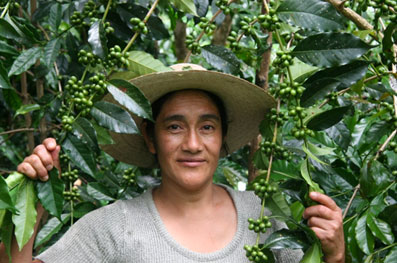Guatemala
GUATEMALA: FOCUS ON THE HUEHUETENANGO REGION
By exporting nearly 3.5 million 60kg bags, Guatemala is among the 5 largest worldwide exporters of Arabica, at the same level as Mexico or Ethiopia.

Coffee is the most important sector for the country and it represents 15% of the total value of exportations and more than 750,000 people rely on operations from this industry.
Small producers represent nearly 80% of the 65,000 coffee growers of the country, but the influence of the main areas of production and the private exporters remain strong.
The production zones stretch out into the sides of the Cuchumatanes Mountains west of Guatemala and near the border of Mexico, further north. This is one of the most remote and hilly coffee growing regions of Guatemala and it is where farmers grow coffee in the highest altitude, safe from any potential frost thanks to warm winds that come from the Tehuantepec plateau in Mexico.
Known for its great ethnic diversity, its citizens of the Mayan civilization, and a rich culture, this rural area depends mostly on agriculture. Coffee is the main source of income for working families among all operating systems. Its impact is financial, ecological, and sociological.
The smaller farmers of the region generally master the farming techniques very well. ANACAFE*, which is in charge of the quality and performance in this sector of Guatemalan economy, provides important assistance, which is relatively well distributed in the Huehuetenango department.
The production of coffee takes place in the shade, according to relatively efficient techniques. Farmers renew coffee plants regularly and maintain them relatively well, in spite of the plants' small size. And therefore the yield is generally very high. Most farmers take care of post-harvest processing of the coffee themselves (pulping, fermentation, drying the coffee parchment).
In this context, the main issues for small farmers are property, sales, and finances: access to property and credit are limited due to difficult access to property tenure and to the influence of local coffee merchants who work for private exporters.
*ANACAFE is the institution in charge of supervising the industry and making sure the Coffee law that regulates the operation is respected. Production is spread over 7 regions that each present specific characteristics of the soil and climate that make for different designations of origin.


